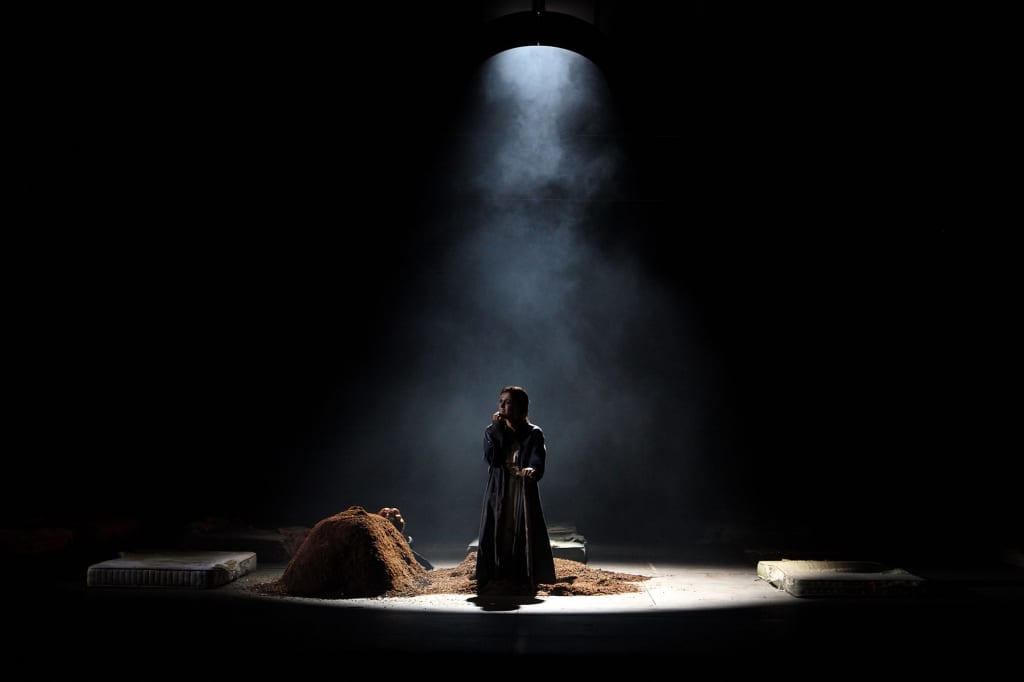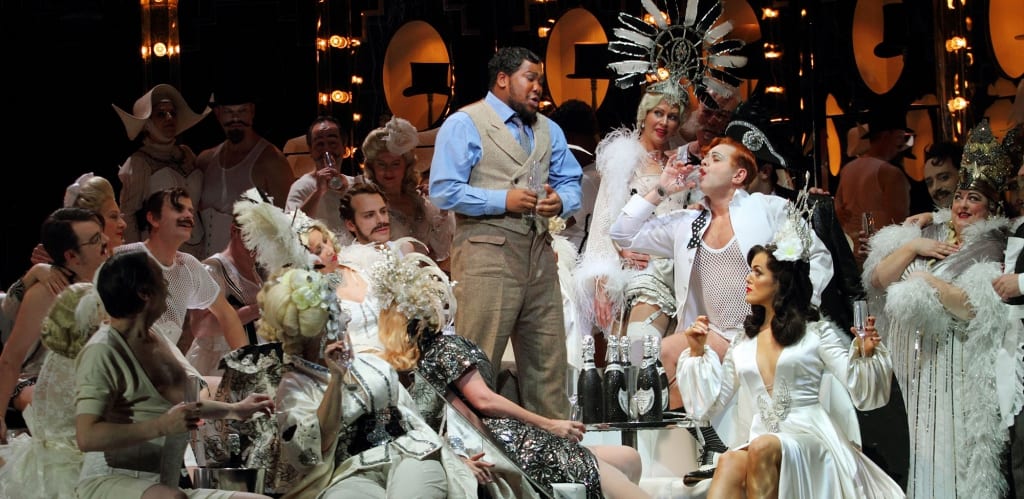Every opera company needs a top quality production of Traviata that it can roll out to bring in the crowds and fill the coffers. Verdi’s tuneful and tear-jerking masterpiece contains some of the finest moments in opera and it is more than capable of flourishing in many settings and versions, traditional and innovative. Daniel Kramer’s new version for ENO has some clever ideas and some fine performances – and Leo McFall brings the best out of the ENO orchestra – but it never quite hangs together and unfortunately its shortcomings are much more obvious than its strengths.
Violetta Valery is a high class courtesan living a dissipated life in Paris. The young and naïve Alfredo Germont falls in love with her and, against her better judgement, she runs off with him leaving her old life behind to live in rural bliss. But Alfredo’s father intervenes and persuades Violetta to leave the man she loves. Alfredo is consumed by jealousy and, by the time he realises that they are both victims of his father’s bourgeois moral standards, it is too late.
Claudia Boyle is a fine Violetta. She looks stunning at the start and cadaverous at the end – as she should. She sings the key arias with a passion that is dramatically spot-on and musically fine, if a little under-powered at times – the Coliseum auditorium is very hard on young singers. Alan Opie is one of the best Germonts I have ever seen – singing with precision and power and twisting his way through the complex changes of mood as he submits Violetta to psychological torture then begins to have second thoughts as he sees her essential goodness. Lukhanyo Moyake is not in the same class as Boyle and Opie – his voice is strong but lacks music and his acting is stilted and uncertain. However, it is difficult to know how much of this is down to Moyake and how much is the product of director Daniel Kramer’s unusual take on the opera.

There is nothing wrong in updating Traviata and there have been many fine versions set in contemporary times. Kramer has some interesting things to say. Violetta is the alpha female in a high class brothel and the entertainments at the two parties – the one that she throws in the opening scene and Flora’s party that ends Act 2 – are perhaps aimed at conjuring up modern day orgies. But to put the ENO chorus in white underwear with a few touches of rubber just does not convince and, though they sing magnificently, they look ill at ease simulating kinky sex acts. And the portrayal of Violetta and Alfredo’s passion is very strange – they both look like excited children at the end of the first scene, Violetta jumping up and down with delight and Alfredo wagging an imaginary tail. We know that death stalks Violetta from the first notes of the score but to set the final scene in a graveyard, with Violetta looking as if she is searching for the skull of poor Yorick, just undermines what can be the most tragic moments in all opera.
There are some wonderful moments. The point at which Germont disowns his son at Flora’s party is chilling. And the confrontation between Violetta and Germont as he tells her of his “pure and lovely daughter” and the ‘impure’ Violetta ends by asking him to embrace her “as a daughter” is heart-breaking, as the music tells us it should be. That these moments are a bit lost amongst a lot of business that does not hang together is a real shame.

